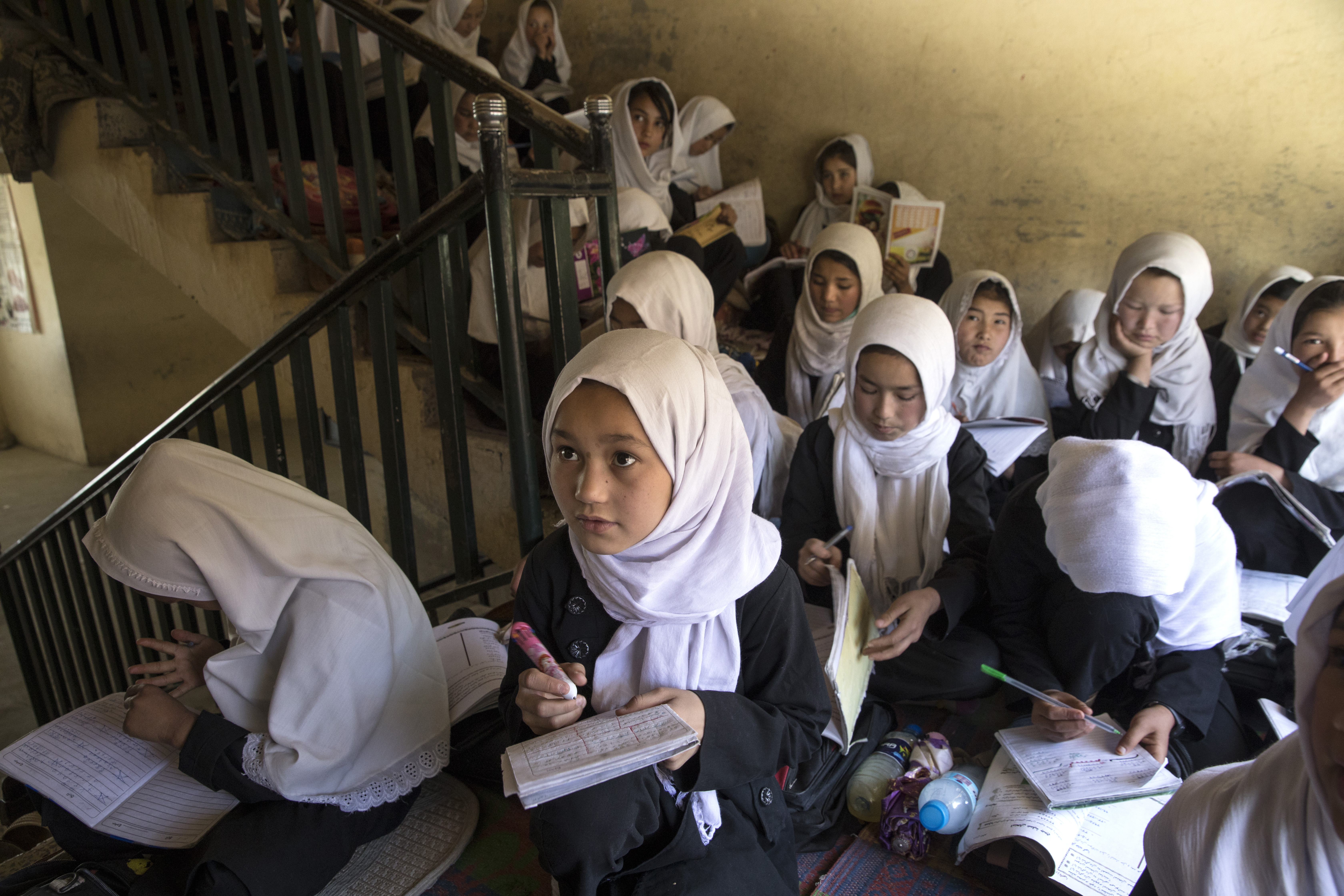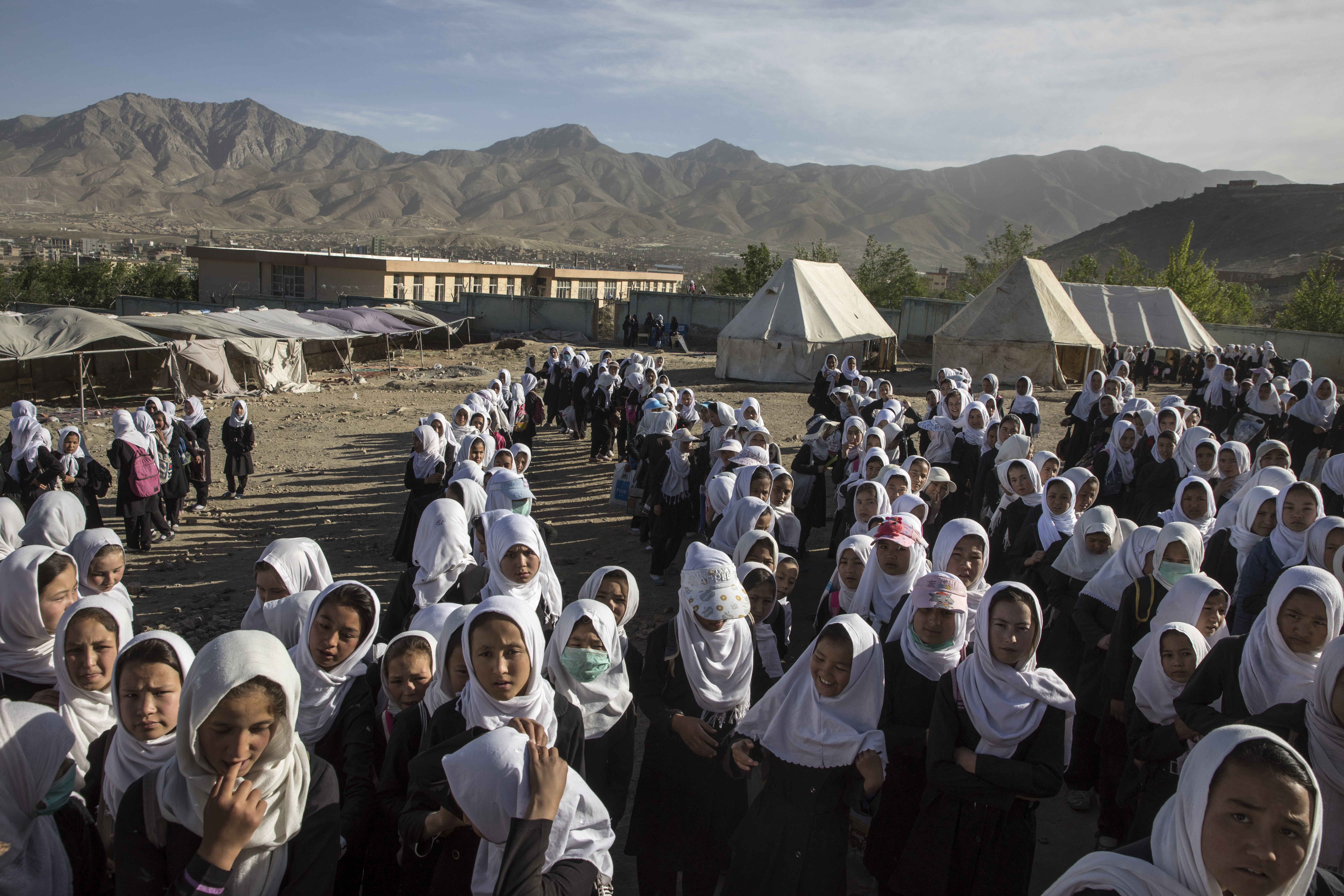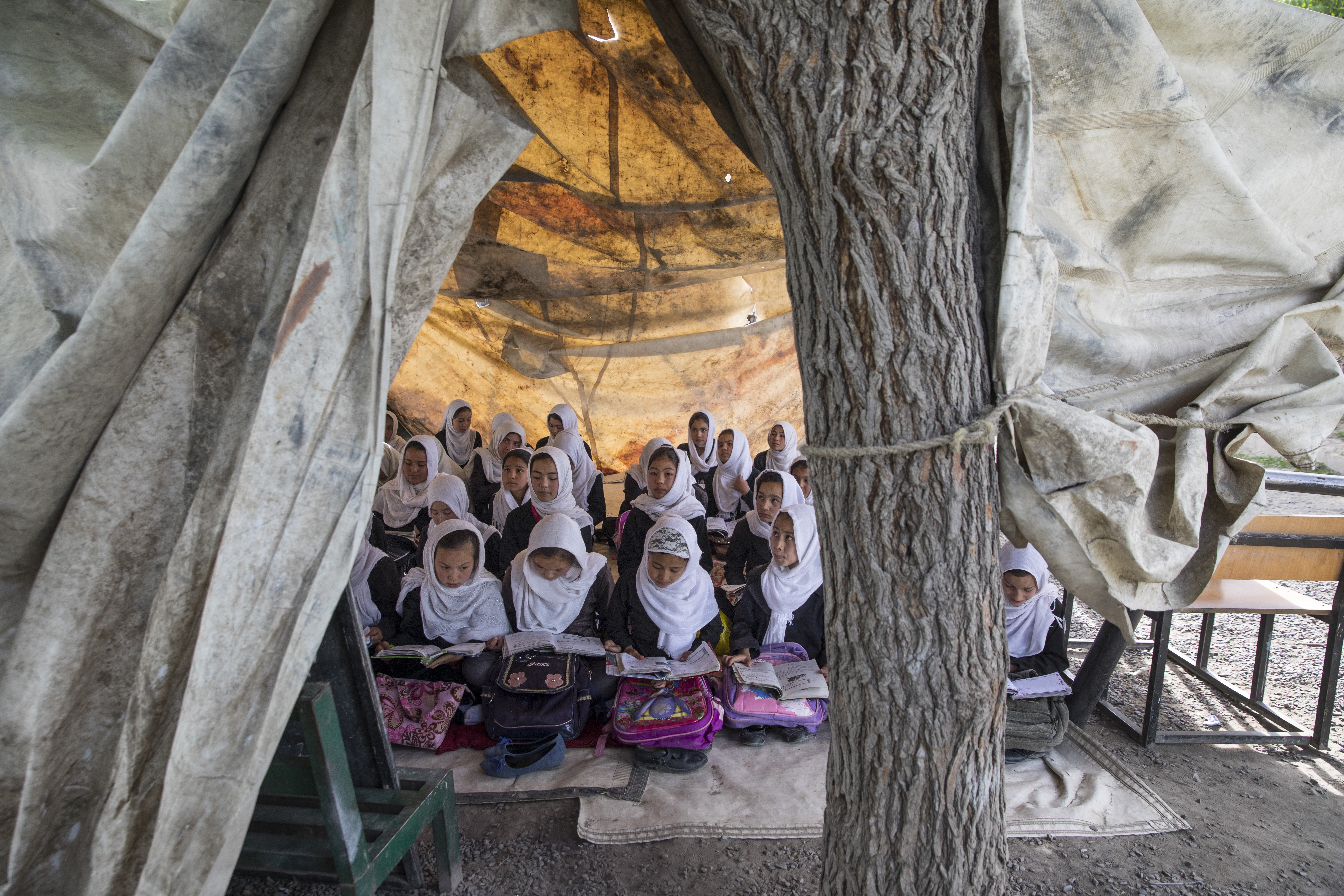While the latest figures from Afghanistan show the number of girls in school is falling, Heather Barr of Human Rights Watch warns the true statistics could be far worse. Urging the west not to break its promise to Afghan girls, Heather (who spent six years living and working in Afghanistan) says a simple strategy could bring hundreds of thousands of girls into education.
The number of girls going to school in Afghanistan is falling.
Afghan government data for the 2016-17 school year shows that in 32 of the country’s 34 provinces the number of girls in school decreased, with 206,000 fewer than the previous year.
The number of boys fell too, but significantly less – by 124,000 across 23 provinces.
A recent UNICEF report corroborates the government findings – the number of children going to school in Afghanistan is falling, and girls are worst affected.
More troubling, these numbers may actually be describing what happened three years ago as the Afghan government counts a child as no longer enrolled only when they have failed to attend for three years.
The last three years have been dark ones in Afghanistan, marked by deepening conflict, rising civilian casualties – many of them children – and escalating displacement. So if the situation was this bad several years ago, it is most likely much worse now.
The story of how we reached this point is about how aid works, how war grinds down good intentions, and how hard the fight is for girls’ equality in Afghanistan (when girls are still fighting for equality in Washington DC – and everywhere else on the planet).

The Taliban were notorious for their mistreatment of women, and their refusal to let girls go to school is their best-known crime.
Symmetrically, the promise to get girls into school became the signature pledge—and often-touted achievement—of the foreign effort in Afghanistan that began in 2001, after the 9/11 attacks.
In May 2002, months after the Taliban regime was toppled by US-led forces, then-US first lady Laura Bush addressed the Afghan people.
“As a former teacher and librarian, I’m especially excited that the schools of Afghanistan are now open and that boys and girls are now allowed to attend them,” she said.
“One of the most important things the mothers and fathers of Afghanistan can do to improve the future of your country is to send your children to school so they will learn to read and learn skills that will help them lead productive lives.”
Millions of girls started going to school, and international donors took pride—and credit—for this in every speech, on every website.
But the job was never more than half done. In 2016, colleagues and I spent weeks travelling across Afghanistan for a Human Rights Watch report asking hundreds of out-of-school girls and their parents why they weren’t in classes.
One moment sticks in my mind.
I asked a girl who had never studied whether other girls in her family had.
One of her older sisters went to school, she said, but only for a year: “She got tired. It was a four-hour walk each way.”
Afghans followed Laura Bush’s advice. Millions of Afghan girls are urgently seeking education and their families are often desperately trying to help.
I’ve met parents who had moved from rural to urban areas or even across the country, sent their daughters to live with relatives, or sent their sons on dangerous journeys to work in Iran or Pakistan, all to get their girls an education.
From 2007 to 2013 – when I lived in Kabul, working for the United Nations and Human Rights Watch – there was a steady decline in security, as the Taliban resurged.
But during much of that time, embassies and aid agencies in the country were feverishly trying to find the magic spell that would fix Afghanistan.
Afghanistan has been, in many ways, a case study in how not to rebuild a country. The US and other troop-contributing nations partnered with local power brokers who too often were serious human rights abusers.
Aid money went into the pockets of contractors from the country funding the project, and fuelled corruption along the way.
Embassy staff were too junior, and short tours meant they left at the moment they began to know what they were doing.

And yet, an urgent desire to find answers was also on display, and a feeling that it was the duty of the countries that intervened to remain there, helping until things were fixed.
That is over now.
When I talk to diplomats and aid officials in Kabul or in other capitals, I am struck by the feeling of hopelessness and, frankly, apathy, toward Afghanistan.
For governments seeking to extricate themselves from Afghanistan, leaving seems as dangerous as staying, though.
Foreign troops remain, in dramatically reduced numbers – although the UK has just announced plans to send 440 more non-combat troops.
Aid continues to flow, in smaller amounts and increasingly into pooled funds that allow donors to scale back their day-to-day efforts.
Few governments today seem to believe in magic spells, and there is little enthusiasm for the decidedly unglamorous measures that could help halt the decline of girls studying and continue progress even as the fighting rages.
After 17 years of foreign aid, Afghanistan still lacks the most basic components of an education system for girls.
Sixty per cent of Afghan government schools have no toilets. No one should have to study at a school without a toilet, but it’s far harder for girls, especially as they reach puberty and begin menstruation.
Building toilets is a perfect example of a cheap, straightforward and quantifiable goal that could make a real difference for girls, war or no war.

The government has twice as many schools for boys as for girls, a form of discrimination that could be fixed almost overnight by adding shifts for girls at boys’ schools.
Hiring more female teachers is essential. In half the country’s provinces, 20% of the teachers, or less, are women, and many families will send their daughters to school only if the teacher is a woman.
Donors should use a new $300 million World Bank programme as a vehicle to make these changes, and to protect the small community-based schools run by non-governmental groups that are serving girls the best, particularly in areas where security has deteriorated.
Laura Bush said that: “The people of America are committed to the people of Afghanistan. We care about you, and we will be your partners in the reconstruction of your country.”
But as the number of girls studying falls, this looks more and more like a broken promise. And there is a feeling among many Afghans, including girls, that the country’s moment is over.
Afghanistan has long been known as the “graveyard of empires.” In 2018, we don’t talk about empires any more.
But Afghan girls may be experiencing the current version —the graveyard of donor commitments.
Now is not the time to give up and break promises. Smart and simple measures in the right places can make the difference and bring hope back to Afghanistan’s girls, their families and their country.



